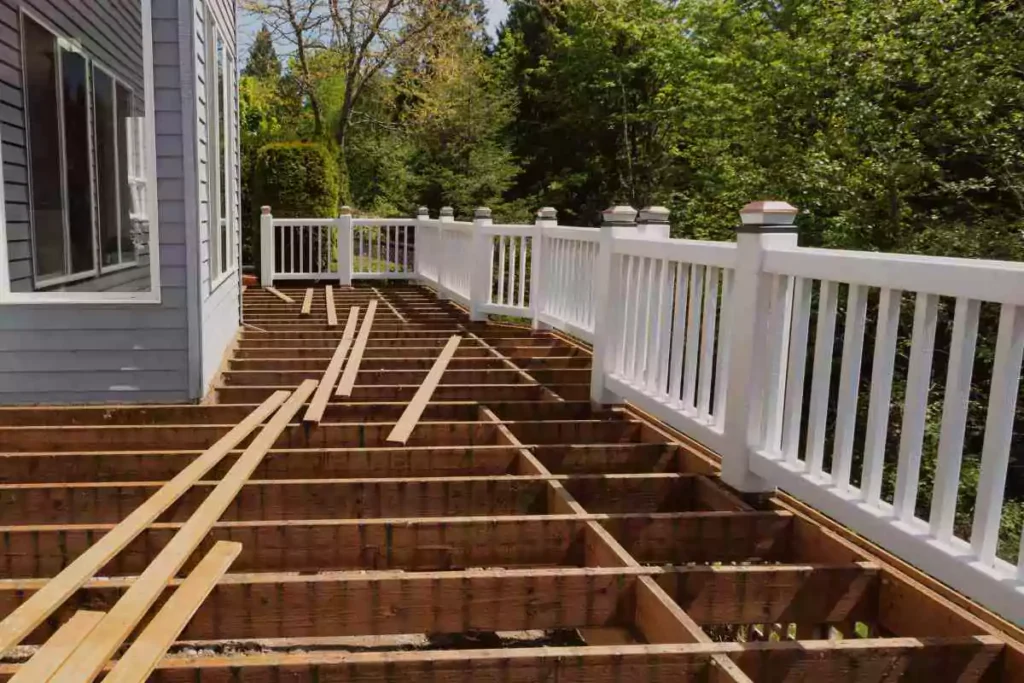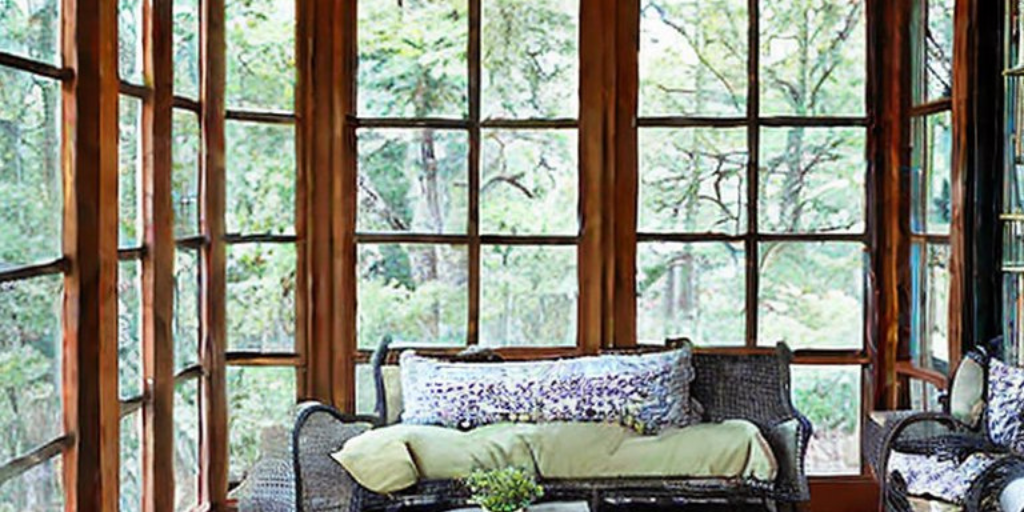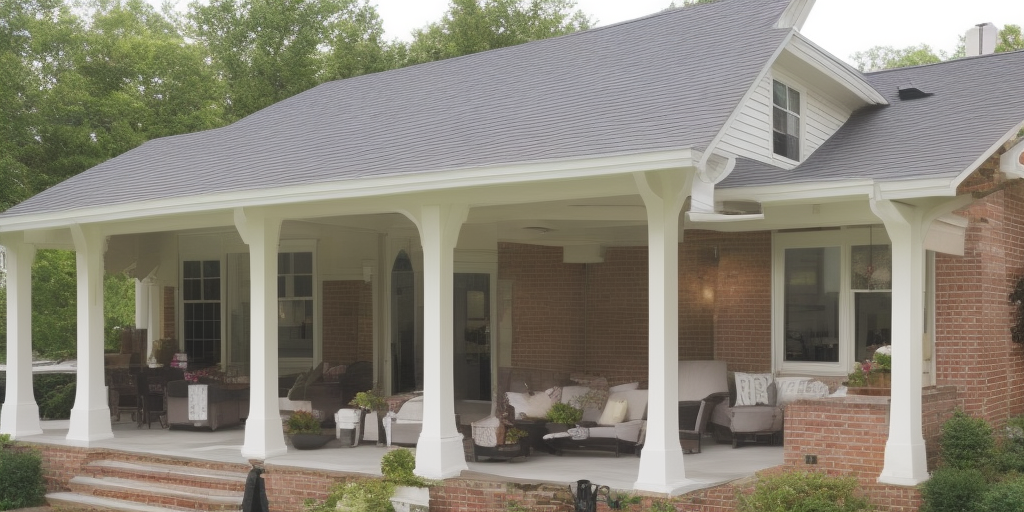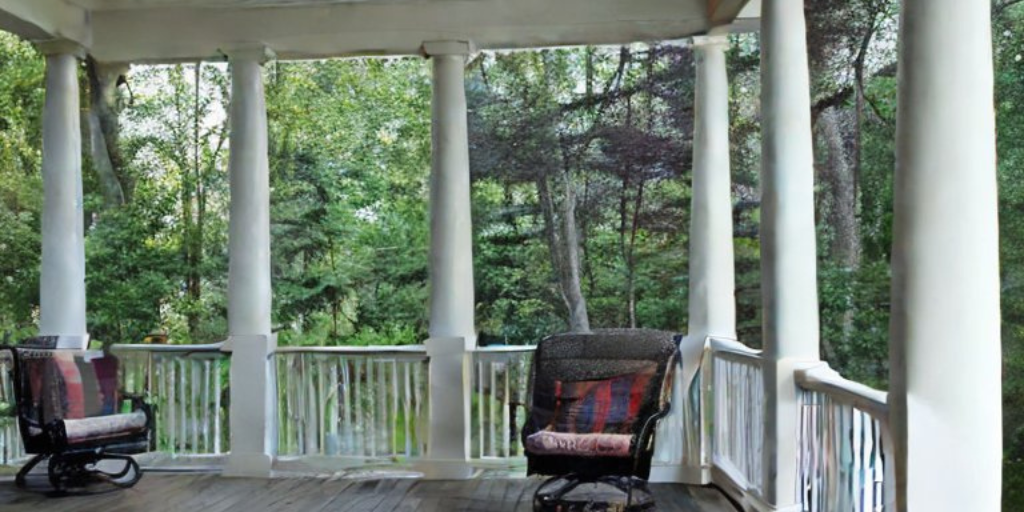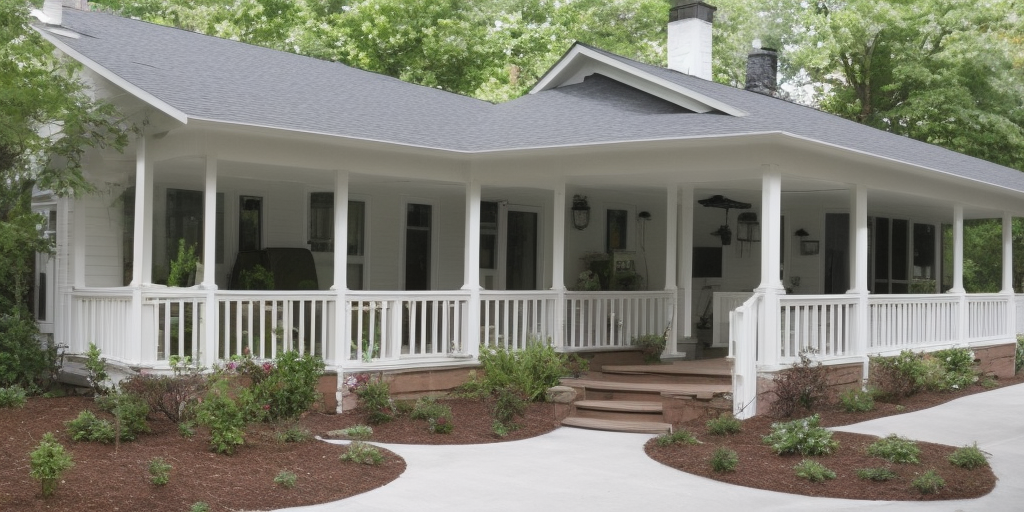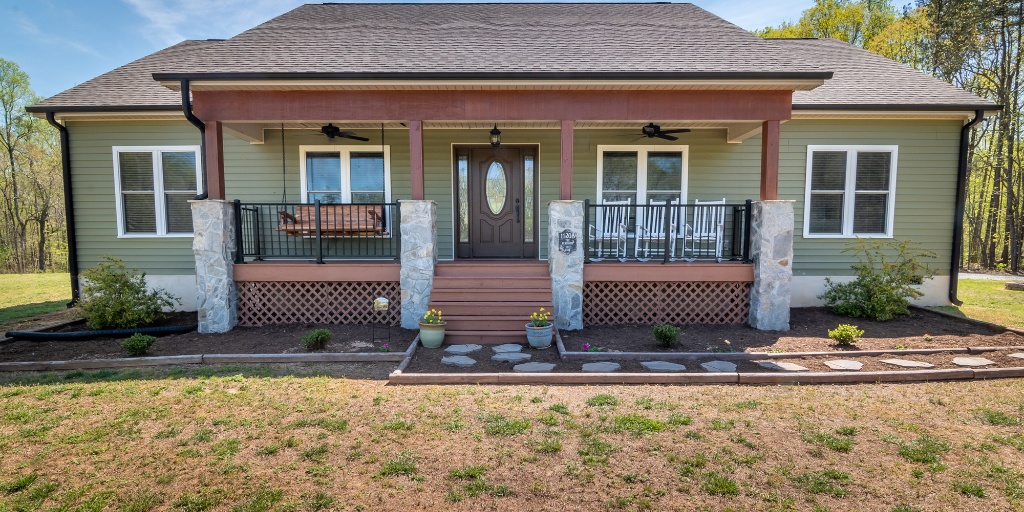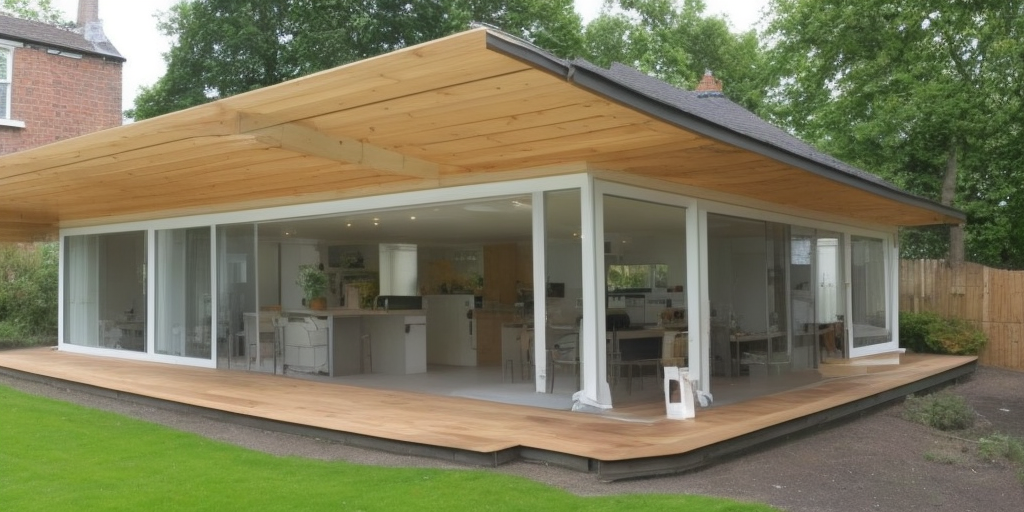A porch is more than just an entryway to your home—it’s an extension of your living space and a place where you can relax, entertain, and enjoy the outdoors. Whether you’re planning a complete remodel or simply looking to refresh your porch, choosing the right materials is crucial to creating a space that’s both beautiful and functional. The materials you select will not only influence the aesthetic of your porch but also its durability, maintenance requirements, and overall longevity.
In this blog post, we’ll guide you through the process of choosing the perfect materials for your porch remodel. We’ll cover key considerations such as climate, budget, and style, and explore popular materials for flooring, railings, and other essential components. By the end of this post, you’ll have the knowledge you need to make informed decisions that will help you create the porch of your dreams.
1. Assessing Your Needs: Functionality and Aesthetics
Contents
- 1 1. Assessing Your Needs: Functionality and Aesthetics
- 2 2. Choosing the Right Flooring: The Foundation of Your Porch
- 3 3. Selecting Railings: Safety and Style Combined
- 4 4. Roofing and Ceiling Materials: Shelter and Style
- 5 5. Incorporating Decorative Elements: Personalizing Your Porch
- 6 6. Creating the Porch of Your Dreams
Before selecting materials, it’s important to assess your specific needs and goals for the porch remodel. Consider how you plan to use the space, your maintenance preferences, and the overall style you want to achieve.
Functionality:
Think about how your porch will be used. Will it primarily be a quiet place to relax with a book, or do you plan to entertain guests frequently? Do you have children or pets who will be using the porch? The answers to these questions will help you determine the durability and type of materials you need.
Aesthetic Goals:
Your porch is a significant part of your home’s curb appeal, so it’s important to choose materials that complement the architectural style of your house. Whether you prefer a traditional, rustic, modern, or coastal look, there are materials available to suit any design preference.
Maintenance:
Consider how much time and effort you’re willing to invest in maintaining your porch. Some materials require regular upkeep to keep them looking their best, while others are more low-maintenance. Your choice of materials should align with your lifestyle and maintenance preferences.
2. Choosing the Right Flooring: The Foundation of Your Porch
The flooring is one of the most critical elements of your porch, as it needs to withstand foot traffic, weather conditions, and daily wear and tear. The right flooring material will provide a durable and attractive foundation for your porch.
Wood:
Wood is a classic choice for porch flooring, offering a warm, natural look that complements a variety of home styles. Common wood options include pine, cedar, redwood, and mahogany.
Pros:
- Aesthetic Appeal: Wood provides a timeless, inviting look that enhances the charm of your porch.
- Versatility: Wood can be stained or painted in various colors to match your design preferences.
- Natural Insulation: Wood has natural insulating properties, making it comfortable underfoot in both warm and cool weather.
Cons:
- Maintenance: Wood requires regular maintenance, including staining or sealing, to protect it from moisture, rot, and insect damage.
- Susceptibility to Weather: Wood can warp, crack, or splinter over time, especially in extreme weather conditions.
Composite Decking:
Composite decking is made from a blend of wood fibers and plastic, offering the look of wood without the high maintenance. It’s a popular choice for homeowners who want the appearance of wood but with added durability.
Pros:
- Low Maintenance: Composite decking is resistant to rot, insects, and fading, requiring minimal upkeep.
- Durability: Composite materials are designed to withstand the elements, making them a long-lasting choice.
- Variety: Available in a wide range of colors and finishes, composite decking can mimic the look of natural wood or create a more contemporary appearance.
Cons:
- Cost: Composite decking is generally more expensive than natural wood.
- Heat Retention: Composite materials can become hot in direct sunlight, which may be uncomfortable in warmer climates.
Concrete:
Concrete is a durable and versatile option for porch flooring, offering a clean, modern look. It can be poured as a solid slab or made into individual pavers.
Pros:
- Durability: Concrete is highly resistant to weather, heavy foot traffic, and wear and tear.
- Low Maintenance: Concrete requires little maintenance beyond occasional cleaning and resealing.
- Customization: Concrete can be stamped, stained, or painted to create a variety of textures and colors.
Cons:
- Cold Surface: Concrete can feel cold and hard underfoot, which may be less comfortable in certain climates.
- Cracking: Over time, concrete can crack due to settling or extreme temperature changes, requiring repairs.
3. Selecting Railings: Safety and Style Combined
Railings are both a safety feature and a design element on your porch. The right railing material will complement your flooring and contribute to the overall aesthetic of your space.
Wood Railings:
Wood railings are a popular choice for traditional and rustic porches, offering a warm, natural look that pairs well with wood flooring.
Pros:
- Classic Appeal: Wood railings provide a timeless, versatile look that suits various architectural styles.
- Customizable: Wood can be painted, stained, or carved to create unique designs and patterns.
Cons:
- Maintenance: Like wood flooring, wood railings require regular maintenance to prevent rot, splintering, and insect damage.
- Weather Sensitivity: Wood railings can warp or crack over time, especially in harsh weather conditions.
Metal Railings:
Metal railings, including options like aluminum, wrought iron, and stainless steel, offer a sleek, modern look with excellent durability.
Pros:
- Durability: Metal railings are resistant to weather, rust, and corrosion, making them a long-lasting choice.
- Low Maintenance: Metal railings require minimal upkeep and can be easily cleaned with water and mild detergent.
- Modern Style: Metal railings provide a clean, contemporary look that works well with modern or industrial design themes.
Cons:
- Cost: High-quality metal railings can be expensive.
- Heat Retention: Metal railings can become hot to the touch in direct sunlight, which may be uncomfortable.
Vinyl Railings:
Vinyl railings are a low-maintenance option that offers a clean, polished look. They are available in various styles, including traditional and modern designs.
Pros:
- Low Maintenance: Vinyl railings are resistant to rot, insects, and fading, requiring little upkeep.
- Affordability: Vinyl is generally more affordable than wood or metal options.
- Easy Installation: Vinyl railings are often easy to install, making them a good option for DIY projects.
Cons:
- Less Customization: Vinyl railings come in fewer color and style options compared to wood or metal.
- Plastic Appearance: Some homeowners feel that vinyl lacks the natural look and feel of wood or metal.
4. Roofing and Ceiling Materials: Shelter and Style
If your porch includes a roof or ceiling, selecting the right materials for these elements is essential to ensuring comfort and style. The roof and ceiling not only protect you from the elements but also contribute to the overall design of your porch.
Roofing Materials:
The roofing material you choose should match or complement the existing roof of your home. Common options include asphalt shingles, metal roofing, and wood shakes.
Asphalt Shingles: Affordable and versatile, asphalt shingles are a popular choice for porch roofing. They come in various colors and styles to match your home’s roof.
Metal Roofing: Metal roofing is durable and weather-resistant, making it an excellent option for porches in areas with harsh weather. It offers a sleek, modern look that complements contemporary homes.
Wood Shakes: For a more rustic, traditional look, wood shakes provide natural beauty and excellent insulation. However, they require regular maintenance to prevent rot and insect damage.
Ceiling Materials:
The ceiling material you choose will impact the comfort and aesthetic of your porch. Options include beadboard, wood planks, and tongue-and-groove panels.
Beadboard: Beadboard ceilings add a touch of charm and texture to your porch. They are often painted white or in pastel shades for a classic, cottage-style look.
Wood Planks: Wood plank ceilings provide a warm, natural look that complements various architectural styles. They can be stained or painted to match your porch’s design.
Tongue-and-Groove Panels: These panels offer a seamless, finished look and are available in various materials, including wood, vinyl, and composite. They’re easy to install and can be painted or stained.
5. Incorporating Decorative Elements: Personalizing Your Porch
Once you’ve chosen the primary materials for your porch remodel, it’s time to think about decorative elements that will personalize your space and make it uniquely yours. Consider adding features like:
- Trim and Molding: Add trim and molding around windows, doors, and the ceiling to create a polished, finished look.
- Lighting: Choose outdoor lighting fixtures that complement your porch’s design, such as lantern-style sconces, string lights, or recessed lighting.
- Furniture and Accessories: Select outdoor furniture and accessories that enhance the comfort and style of your porch, such as weather-resistant cushions, throw pillows, and potted plants.
6. Creating the Porch of Your Dreams
Choosing the perfect materials for your porch remodel is an exciting opportunity to enhance the beauty, functionality, and value of your home. By carefully considering factors like functionality, aesthetics, maintenance, and climate, you can select materials that will stand the test of time and create a welcoming outdoor space for you and your family to enjoy.
Whether you prefer the classic charm of wood, the durability of composite materials, or the sleek look of metal, the right materials will help you bring your vision to life. With thoughtful planning and attention to detail, your porch remodel will result in a stunning, inviting space that reflects your personal style and complements your home’s architecture.
